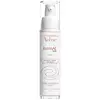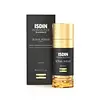What's inside
What's inside
 Key Ingredients
Key Ingredients

 Benefits
Benefits

 Concerns
Concerns

 Ingredients Side-by-side
Ingredients Side-by-side

Water
Skin ConditioningCaprylic/Capric Triglyceride
MaskingParaffinum Liquidum
EmollientGlyceryl Stearate
EmollientPEG-100 Stearate
Squalane
EmollientPropylene Glycol
HumectantMicrocrystalline Wax
Emulsion StabilisingPEG-40 Hydrogenated Castor Oil
EmulsifyingBHT
AntioxidantCaprylyl Glycol
EmollientCarbomer
Emulsion StabilisingDisodium EDTA
Oleoyl Dipeptide-15
Skin ConditioningOleoyl Tetrapeptide-31
AntioxidantCI 17200
Cosmetic ColorantRetinal
Skin ConditioningTocopheryl Glucoside
EmollientTriethanolamine
BufferingWater, Caprylic/Capric Triglyceride, Paraffinum Liquidum, Glyceryl Stearate, PEG-100 Stearate, Squalane, Propylene Glycol, Microcrystalline Wax, PEG-40 Hydrogenated Castor Oil, BHT, Caprylyl Glycol, Carbomer, Disodium EDTA, Oleoyl Dipeptide-15, Oleoyl Tetrapeptide-31, CI 17200, Retinal, Tocopheryl Glucoside, Triethanolamine
Water
Skin ConditioningDimethicone
EmollientDibutyl Adipate
EmollientNiacinamide
SmoothingIsoamyl Laurate
EmollientLauryl PEG/PPG-18/18 Methicone
Skin ConditioningGlycerin
HumectantPropanediol
SolventDimethicone/Vinyl Dimethicone Crosspolymer
Skin ConditioningAlcohol Denat.
AntimicrobialBakuchiol
Antimicrobial1,2-Hexanediol
Skin ConditioningPentylene Glycol
Skin ConditioningCaprylic/Capric Triglyceride
MaskingEthylcellulose
Hydroxyacetophenone
AntioxidantPentaerythrityl Tetra-Di-T-Butyl Hydroxyhydrocinnamate
Antioxidant4-T-Butylcyclohexanol
MaskingCaprylyl Glycol
EmollientParfum
MaskingSodium Acrylates Crosspolymer-2
AbsorbentPolyacrylate Crosspolymer-6
Emulsion StabilisingVigna Aconitifolia Seed Extract
Skin ConditioningTocopheryl Acetate
AntioxidantTocopherol
AntioxidantCitric Acid
BufferingXanthan Gum
EmulsifyingMaltodextrin
AbsorbentMelatonin
AntioxidantRetinal
Skin ConditioningSilica
AbrasiveDisodium EDTA
Phospholipids
Skin ConditioningSynthetic Fluorphlogopite
CI 77891
Cosmetic ColorantAscorbic Acid
AntioxidantT-Butyl Alcohol
PerfumingRosmarinus Officinalis Leaf Extract
AntimicrobialPalmitoyl Tetrapeptide-7
Skin ConditioningTin Oxide
AbrasiveChrysin
Skin ConditioningWater, Dimethicone, Dibutyl Adipate, Niacinamide, Isoamyl Laurate, Lauryl PEG/PPG-18/18 Methicone, Glycerin, Propanediol, Dimethicone/Vinyl Dimethicone Crosspolymer, Alcohol Denat., Bakuchiol, 1,2-Hexanediol, Pentylene Glycol, Caprylic/Capric Triglyceride, Ethylcellulose, Hydroxyacetophenone, Pentaerythrityl Tetra-Di-T-Butyl Hydroxyhydrocinnamate, 4-T-Butylcyclohexanol, Caprylyl Glycol, Parfum, Sodium Acrylates Crosspolymer-2, Polyacrylate Crosspolymer-6, Vigna Aconitifolia Seed Extract, Tocopheryl Acetate, Tocopherol, Citric Acid, Xanthan Gum, Maltodextrin, Melatonin, Retinal, Silica, Disodium EDTA, Phospholipids, Synthetic Fluorphlogopite, CI 77891, Ascorbic Acid, T-Butyl Alcohol, Rosmarinus Officinalis Leaf Extract, Palmitoyl Tetrapeptide-7, Tin Oxide, Chrysin
Ingredients Explained
These ingredients are found in both products.
Ingredients higher up in an ingredient list are typically present in a larger amount.
This ingredient is an emollient, solvent, and texture enhancer. It is considered a skin-softener by helping the skin prevent moisture loss.
It helps thicken a product's formula and makes it easier to spread by dissolving clumping compounds.
Caprylic Triglyceride is made by combining glycerin with coconut oil, forming a clear liquid.
While there is an assumption Caprylic Triglyceride can clog pores due to it being derived from coconut oil, there is no research supporting this.
Learn more about Caprylic/Capric TriglycerideCaprylyl Glycol is a humectant and emollient, meaning it attracts and preserves moisture.
It is a common ingredient in many products, especially those designed to hydrate skin. The primary benefits are retaining moisture, skin softening, and promoting a healthy skin barrier.
Though Caprylyl Glycol is an alcohol derived from fatty acids, it is not the kind that can dry out skin.
This ingredient is also used as a preservative to extend the life of products. It has slight antimicrobial properties.
Learn more about Caprylyl GlycolDisodium EDTA plays a role in making products more stable by aiding other preservatives.
It is a chelating agent, meaning it neutralizes metal ions that may be found in a product.
Disodium EDTA is a salt of edetic acid and is found to be safe in cosmetic ingredients.
Learn more about Disodium EDTARetinal is a form of retinoid. Retinoids are the gold-standard class of anti-aging ingredients.
Retinal has many benefits as other retinoids: improve skin texture, reduce large pores, reduce the effects of aging, reduce the visibility of dark spots, heal scars, and fight acne.
Studies show retinal may work at a faster rate than retinol due to its structure.
All retinoids have to be converted into retinoic acid before starting to work. Some retinoids take several steps of conversion before binding. Retinal is only one step away, making it more potent.
Like other retinoids, retinal may be irritating. It is best to ease into using this ingredient frequently.
Using the 'ramp up' method, start by using retinol once a week. This gives your skin time to adjust and decrease irritation. Once you feel ready, you can slowly increase the frequency of retinol use.
Using retinoids will increase sun-sensitivity in the first few weeks of use. Though studies show retinoids increase your skin's natural SPF with continuous use, it is best to always wear sunscreen and sun-protection.
Learn more about RetinalWater. It's the most common cosmetic ingredient of all. You'll usually see it at the top of ingredient lists, meaning that it makes up the largest part of the product.
So why is it so popular? Water most often acts as a solvent - this means that it helps dissolve other ingredients into the formulation.
You'll also recognize water as that liquid we all need to stay alive. If you see this, drink a glass of water. Stay hydrated!
Learn more about Water